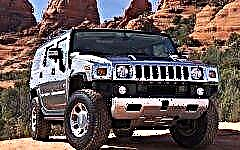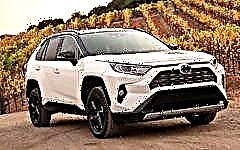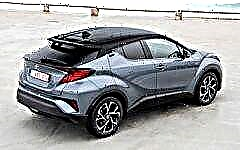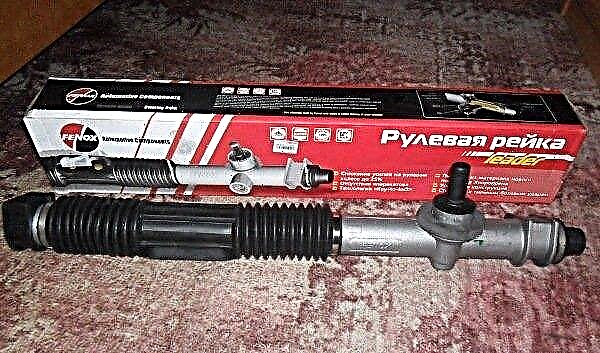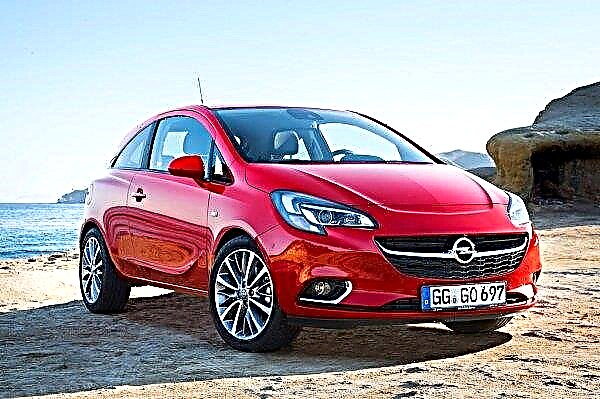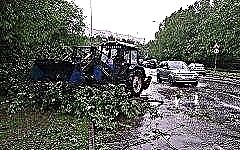

The content of the article:
- If a hurricane is on the way
- In the town
- In a small village
Any natural disaster has a direct impact on both residents of megalopolises and small settlements, and it is the drivers who suffer from this in the first place. Cars take the blow of the elements, no matter where they are.
One of the most dangerous natural phenomena is a hurricane, so it is important to pay special attention to the basic rules of behavior in such a situation.
If a hurricane is on the way

Driving in a car during gusts of wind, rainstorms, thunderclaps is not only difficult, but also extremely dangerous. Therefore, all experts agree that the main peak of the natural disaster should be waited out in a safe place. Moreover, representatives of the Ministry of Emergency Situations claim that the likelihood of lightning striking a moving car is definitely higher.
Another hazard factor is that highways tend to be natural hills, which intensify the impact of gusts of wind, as a result of which you can not only lose control, but also roll over from the embankment.
When determining a parking space, in any case, do not choose the side of roads, as the difficult visibility can lead to the fact that other cars can crash into you. It is also worth considering the fact that billboards or trees in the immediate vicinity are a potential source of danger, as they can be knocked down by powerful winds.
Quite often, a hurricane is accompanied by discharges of lightning and thunder, so it is necessary to avoid natural hills, as well as fold the telescopic antenna on your car (if there is one) and close the windows.
As far as lightning strikes directly into your car, this, of course, should be avoided by any means, but you must remember that its body perfectly conducts current, so that passengers are unlikely to be in danger. Nevertheless, in a number of models there are metal parts that are not covered with salon plastic or other cladding, therefore, you should be careful not to touch these surfaces.
You should also not choose lowlands or slopes as a parking place, since after intense precipitation there may be a sharp rise in the water level, as a result of which you will have to flee from another natural disaster.
Pay attention to the location of the power lines: the poles and masts of which can be knocked down, and the wires are not de-energized in time.
It is best to position the car with its front end towards the wind, which is due to the peculiarities of aerodynamics, as well as the fact that it is in this direction that the risk of overturning is minimal (which is especially important for minibuses or tall SUVs).
In addition, the lack of a hard surface under the wheels is also a very problematic factor. because after heavy rainfall, you can simply get stuck away from busy roads and settlements, so the surface must be well rolled or densely overgrown with low grass that will not let you get bogged down.
A key mistake in trying to protect your property is going under a bridge, a cattle drive or inside a culvert. Such structures are designed to allow the passage of both natural water bodies and atmospheric precipitation, which can lead to the washout of your car. A relatively reasonable solution is to place it under an overpass or overpass, but always behind a barrier fence, which will save not only from the elements, but also from collisions with other cars. It should be remembered that such a decision is prohibited by the rules and is punishable by a fine, but its value is incomparable with the possible damage.
If a hurricane is caught in the city

In such a situation, the main rule of preliminary preparation of the car for the passage of a natural disaster is the correct choice of parking. The underground parking is ideal for protecting from wind, falling trees, poles or billboards. But it is worth choosing it only if it is not located in a lowland and does not risk being flooded by storm waters.
Open parking lots away from trees or other structures that could be knocked down are also good options. It is worth noting that if there are tall buildings nearby, you can position the car in such a way that they cover it from the leeward side.
Remember that hurricane winds can move and even overturn cars. Private houses are an additional source of danger, since their strength and stability of individual elements is a matter of the qualifications of builders. A torn sheet of metal or slate, a knocked-down fence or a beam torn off from the veranda can cause serious harm.
Another danger for your car is hail, the size and speed of falling of which can harm not only the paintwork of the body, but also the glass, but also leave numerous dents and chips, up to the need to replace some body elements.
If it is impossible to place the car in the garage, you can use special inflatable capes that completely dampen the impact energy, or, in extreme cases, a regular car cover, which at least will reduce the damage caused. The only thing worth thinking about in this case is to provide for a reliable fixation of such a coating.
Let's list the safest places for the car:
- garage;
- indoor parking;
- parking under a solid canopy;
- parking away from trees and advertising structures, with a protective cover.
After the first wave passes, the second comes - flooding of the territory, which is most dangerous precisely within the city limits, since the streets, rolled into asphalt and bounded by brick buildings and fences, are an ideal artificial channel for a raging stream. That is why, even in urban areas, pay attention to the nature of the relief and do not leave the car in the lowlands.
Stay as far away from construction sites as possible, which are the source of various types of heavy objects carried away by the wind. In addition, tower cranes are also a colossal danger, the fall of which on a car not only excludes the possibility of restoring the latter, but can also lead to the death of passengers.
In this case, immediately after placing the car, hurry to a safe shelter, since any modern building is much safer than a car.

Different types of insurance are called a separate article of protection, but it is rather a way to compensate for damage. In addition, a policy that covers natural disasters is significantly more expensive. You should not expect that the damage from the collapsed tree will be immediately reimbursed, since it is likely that such a development of events will shift the responsibility to public utilities who are obliged to cut down potentially dangerous trees.
If a hurricane is found in a small town

A village, town or country cooperative is not the best place to wait out the elements, especially if your car is not in a major garage. An abundance of temporary structures, trees and sheds of dubious strength are a potential source of flying debris.
In addition, in such places there is no lightning rod system, so the risk of a lightning strike in your immediate vicinity increases many times over.Particular attention should be paid to the passage of water streams after precipitation, so that the soil under the wheels should be stable, and the parking place should be at a considerable distance from water bodies, ravines and lowlands.
If there is nowhere to go, then the car should be placed behind a potentially dangerous territory or try to use other capital structures, such as hangars at farms, places for storing anti-icing materials (these are closed industrial-type buildings that are present in any settlement), agricultural buildings. It is, of course, best to leave the car and wait in the house or basement. Remember - no matter how impressive and massive the roof racks may look, if a branch falls, even a medium-sized one, they will certainly crumple, and the glass will not protect at all from flying debris.
After the main wave of the element subsides, do not rush to leave the shelter, as residual impulses are possible, which are not inferior in strength to the main ones. By following these simple recommendations, you will not only reduce the danger to yourself and your passengers, but also insure the car as much as possible against potential damage.


